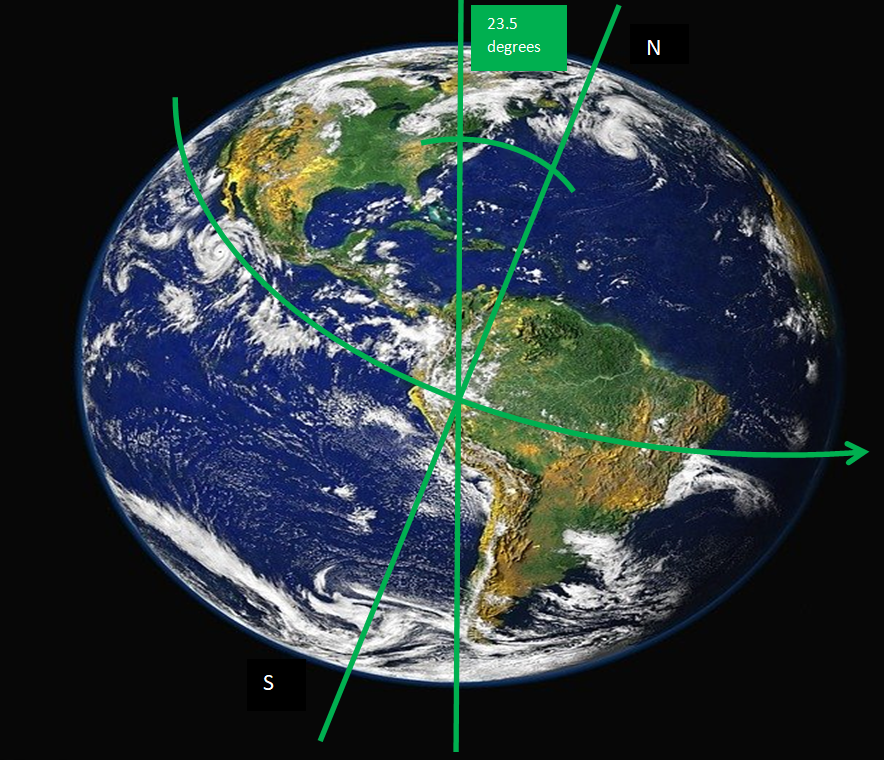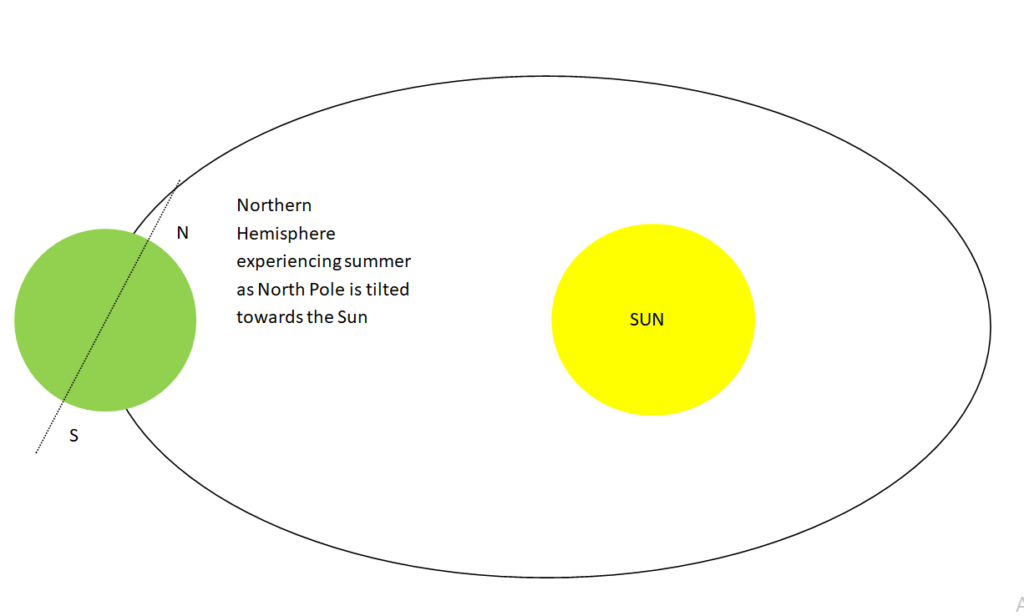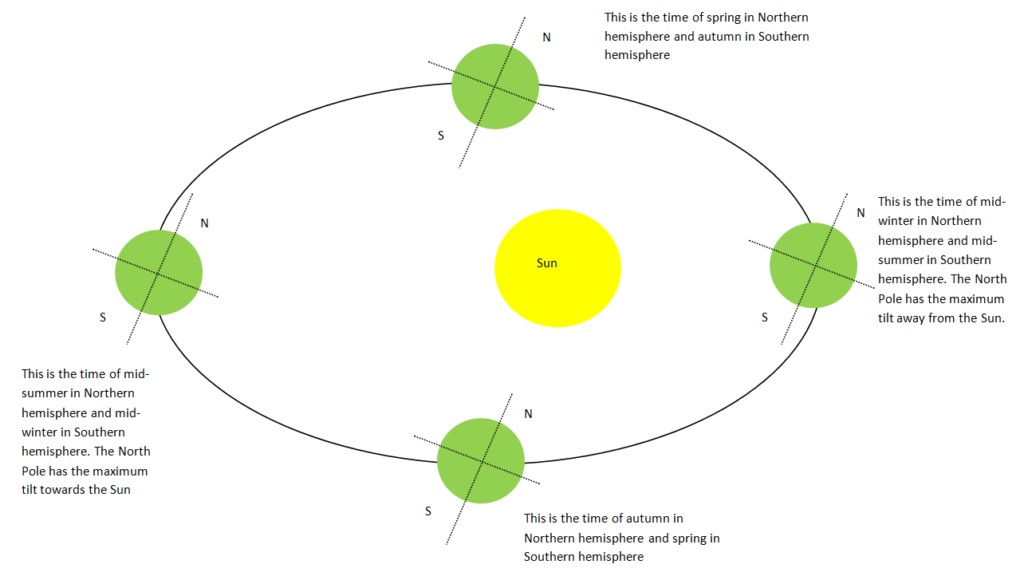Many people think summers occur when the earth is closer to the sun. This is not true. In fact, when there are summers in the Northern Hemisphere, the
The seasons on Earth (or any other planet) occur due to its axial tilt. Earth’s axis is an imaginary line passing through the geographic North Pole and the geographic South Pole, around which it rotates. The axis is tilted at an angle of 23.5° with respect to the perpendicular to the orbital plane.

When the North Pole tilts towards the sun, Northern Hemisphere experiences summer. This is because the Northern Hemisphere receives more direct sunlight. On the contrary, the Southern Hemisphere experiences winter as it receives less direct sunlight.

The four seasons on Earth
Summer
During the summer season, temperatures rise and the days are longer. Mid-summer in the Northern Hemisphere is the time when the North Pole has the maximum tilt towards the Sun. This is also the time of mid-winter in the Southern Hemisphere.
Mid-summer (summer solstice) in Northern Hemisphere = mid-winter (winter solstice) in Southern Hemisphere = around 21 June

Winter
During the winter season, temperatures are low and the days are shorter.
Mid-winter in Northern Hemisphere = mid-summer in Southern Hemisphere = around 21 December
Spring
Spring is the season when the flowers blossom. It is basically the transformation phase from winter to summer.
Autumn
Autumn is the season when the trees shed their leaves. It is basically the transition phase from summer to winter.
Equinox and solstice
Equinox is the time of year when the durations of day and night are approximately equal. It occurs twice a year. Once during the spring and once during the autumn season. The spring equinox in the Northern Hemisphere (also autumn equinox in the Southern Hemisphere) occurs around 20 March. The autumn equinox in the Northern Hemisphere (also spring equinox in the Southern Hemisphere) occurs around 22 September.
Solstice is the time of year when the poles have a maximum tilt towards or away from the sun. The summer solstice in the Northern Hemisphere (also winter solstice in the Southern Hemisphere) occurs around 21 June. The winter solstice in the Northern Hemisphere (also summer solstice in the Southern Hemisphere) occurs around 21 December.
Seasons at the poles
The Poles have very cold winters and cool summers. During the winter, there is no sunlight for the entire 24 hours of the day. On the contrary, during summers, there is continuous sunlight for the entire 24 hours.
Quick question
Perihelion is the nearest point in an object’s orbit from the Sun.
Read more
- Why is the South Pole colder than the North Pole?
- Layers of the atmosphere | Troposphere, Stratosphere, Mesosphere, etc.
- Types of clouds | Cirrus, Cirrocumulus, Cirrostratus, etc.
- Why are hill stations colder than Plains?
Answer to quick question
True